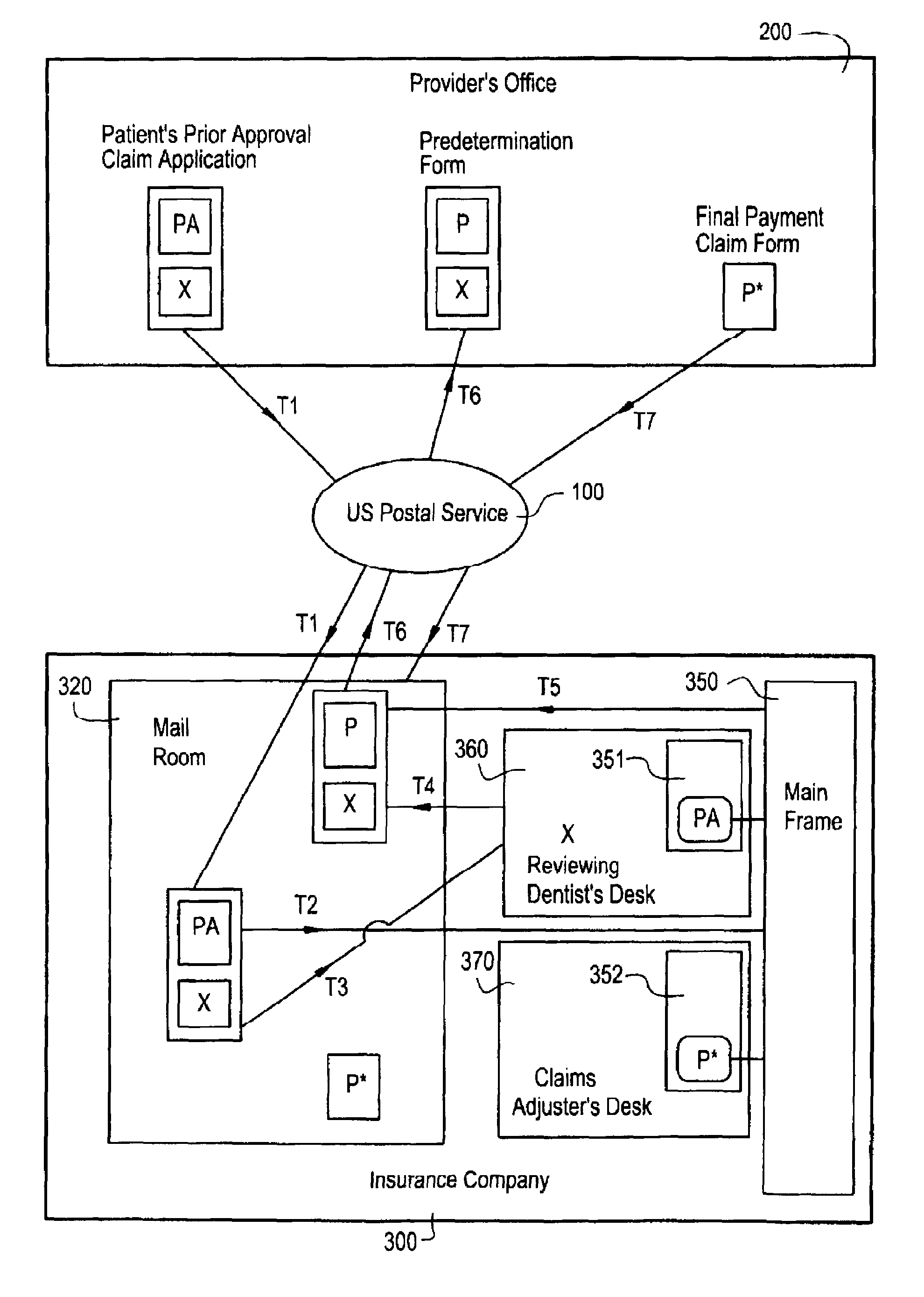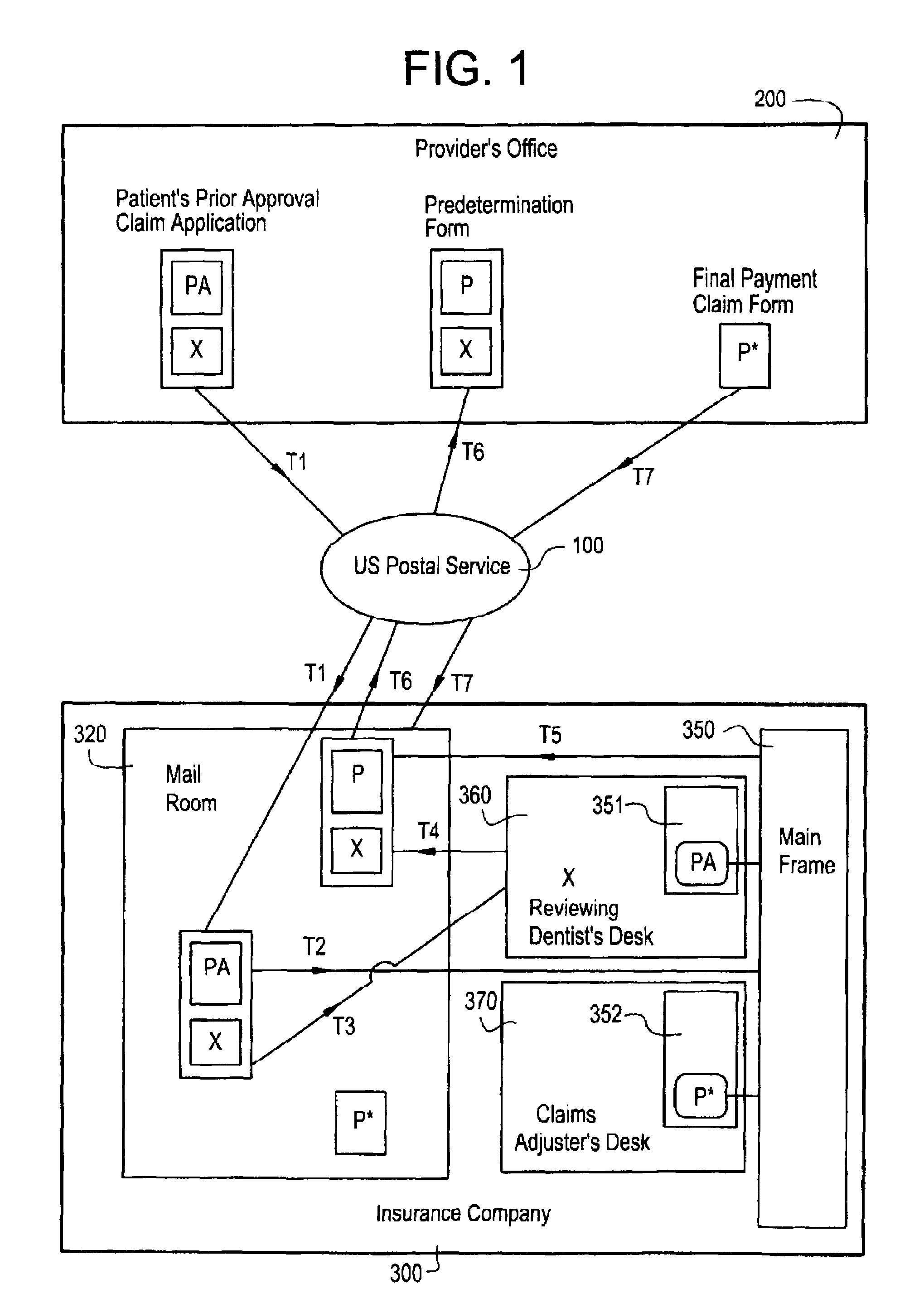High administrative costs for filing and
processing health insurance claims have been the bane of the health insurance industry from its inception.
There were many virtues to these early systems, primarily with respect to decreased administrative costs, but a major drawback was that the data for each “paper” claim had to be entered into the computer to form an electronic claim.
Although the idea was straightforward, implementation was not.
Second, a majority of providers have to be able to interface with a majority of insurance companies, i.e., insurance company mainframe computers.
However, because of the way computers had entered the insurance industry originally (stage #2), there was no industry-wide standard, i.e., the legacy mainframe computers of the different insurance companies were incompatible.
But there are many claims that do not meet these conditions.
The aspect of this type of claim which renders it incompatible with the present electronic claim processing
system is that the insurance companies require that additional
medical evidence be included, i.e., attached to, the text part of the claim form.
But transforming the
medical evidence into digital form is not enough to facilitate electronic processing of claims with attachments.
First, NEIC does not at the present time allow this type of information to be transmitted through NEIC to the insurance companies.
Second, with the current system, the daims adjusters access claims information through terminals connected to mainframes.
But there is the inherent problem of displaying images on mainframe computers.
This results in a massive
interfacing problem since there are multitudes of insurance companies using different legacy hardware systems and company unique
software.
Each time a way has been found to more fully utilize computers in claims processing systems, the administrative costs associated with the claims processing have gone down.
However, in the area of “claims with attachments,” no coherent industry-wide system exists that allows for the integrated filing, transmitting and processing of these claims electronically, i.e., via computers.
This
hybrid system, which is described in greater detail below, is labor intensive, prone to problems, and slow.
For providers, insurance companies, and patients, this is a time-consuming, costly and irritating process.
In fact, there are even difficulties with the second stage.
However, the presence of a film x-
ray means that electronic claims methods cannot be implemented.
However, since an attachment is not normally associated with the Final claim Form, additional discussion regarding disposition of the Final claim Form within the insurance company will not be provided.
It will be appreciated that a myriad of problems and inefficiencies arise due to claim processing in accordance with the
hybrid system.
1. All information needed to complete the PAC form has to be entered by hand. Moreover, all of the information on the PAC form is also manually transcribed in order to transfer the information from paper to the insurance company's
mainframe computer. Both of these manual
data entry process steps are
time consuming, very costly, and prone to
human error;
2. The x-
ray film and the text form are put together and then separated several times during the overall claim processing;
3. The
hybrid system requires that a
hard copy of the x-ray be sent to the insurance company. Generally, this x-ray is returned to the provider. Moreover, the requirement that the dentist provide the x-ray typically means that a duplicate x-ray has to be made by the dentist, which increases the dentist's cost for the service. Oftentimes, the duplicate x-ray is of
poor quality and cannot be read;
4. Because prior approval claim forms cannot be processed electronically, and because PAC forms make up half of all the claims that approximately 20,000 oral surgeons, periodontists, and orthodontists make each year, these 20,000 providers have no compelling reason to initiate electronic claims for Final
Payment claims;
5. The document identification number is affixed to the x-ray and the electronic text in two different processes, one physical and the other electronic. This leads to errors;
6. After the procedure has been completed, almost identical information may again have to be entered by hand in order to prepare the Final
Payment claim form;
7. While direct digital x-ray equipment is available, it is difficult to integrate a digital x-ray into the current hybrid claims processing system, i.e., these computerized images would first have to be transferred to film, which would, of course, negate the major
advantage for using direct digital x-rays;
8. Some insurance companies would like to require that x-rays accompany all dental claims; they are prevented from doing so because of the high administrative overhead associated with handling hardcopy claims;
9. The patient has to obtain the PAC form from the insurance company or his employer. In either case, this causes the patient time, is an irritant, and imposes unnecessary delays on the delivery of
medical care to the insured;
This is the source of a great many of the above described problems.
Moreover, the current hybrid method is costly.
Furthermore, the whole process is filled with potential for error,
frustration, wasted time and money.
Regardless of these differences, there are similarities in the problems that arise in processing such claims.
 Login to View More
Login to View More  Login to View More
Login to View More 


